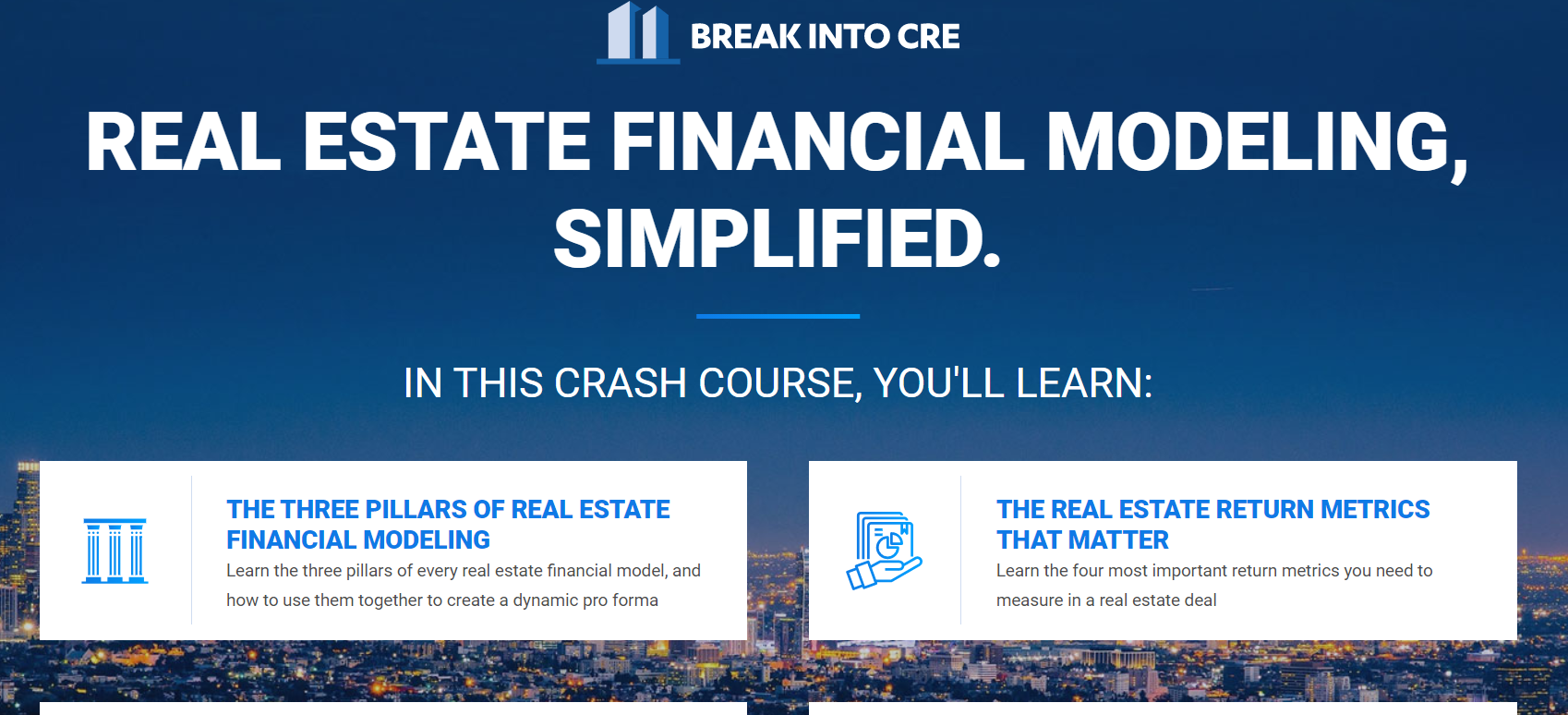Getting Started with Commercial Real Estate Concepts
Commercial real estate is a complicated topic complete with terminology that is sure to confuse beginners. I wrote this article to help people in getting started with commercial real estate concepts. It is the information I wish I had when I first started learning.

The process of buying commercial real estate isn’t technically different than buying residential real estate. You investigate a property, make an offer including some contingencies, and if all goes well, you close on the property. One of the biggest differences is the scale of transactions.
Transactions for commercial real estate can be in the millions, or even billions. Most deals are beyond the financial resources of single investors. Even larger investors often pool resources together to lower their risk profiles.
Different Categories of Commercial Real Estate
Residential real estate transactions focus on single-family properties. The line is blurred for condos because they can fall in both the residential and commercial categories. If you are looking to invest in cash flows from several condos, you would probably fall into the commercial investor class. If you buy one or two units for you and your family members to live in, that will classify you as a residential owner.
When you start getting into industrial, retail, and office properties, there is little doubt about these investments categorized into the commercial real estate class. The following are major categories for commercial real estate:
Some real estate investors may include land and mixed-use categories.
Real estate investors seek returns from steady cash flows. Residential real estate usually does not fall into this type of investment. Most owners buy homes to live in with the added benefit that it may appreaciate in value. While residential real estate can be pooled into RMBS structures, the bulk of residential transactions are for buyers to live in their homes as primary residences.
The categories for commercial real estate can be subdivided further, usually determined by the size of the property. For instance, a large shopping mall will be distinguished from a strip mall in a small town. Office buildings are often subdivided based on the location as well as size (downtown area vs. suburban campus, etc.)
Which to Choose?
Some large investment firms will invest in asset classes from several of the categories. For smaller investors, though, it often pays to concentrate on a few categories, or even just one. Trying to learn everything about all asset classes can be overwhelming for small investors. When you start with one asset class, you are welcome to add more after you master the one.

However, to choose which asset class or classes, you’ll want to understand the differences between them. You’ll need to understand the risks and potential rewards associated with each. That isn’t always an easy task unless you’re immersed in the business.
Successful investing requires understanding what constitutes a decent return given the associated risk. Sometimes, the only way to understand this is through experience.
What to Learn
Although experience goes a long way, you can lay the groundwork for learning the proper concepts. As the concepts are a bit involved, we won’t cover the specifics. But you can take what is presented here and further your knowledge online through courses and websites.

Understanding real estate boils down to learning how to value the cash flows of a deal. Real estate models often use assumptions that project the cash flows. Other metrics, such as reimbursements of expenses, tenant improvements, leasing costs, vacancy rates, etc., are all used to help determine the potential value of the properties.
Often, asset managers will project a scenario analysis using worst case, base case, and best-case scenarios. This helps potential investors gauge the risks associated with the properties.
Investor Risk Categories
Every investment faces a certain amount of risk. For commercial real estate, there are four classes of risk. Investors should classify their appetite for risk using the following:
- Core
- Core+
- Value Add
- Opportunistic
Core Risk
This is the category with the least amount of risk. It’s geared towards pension fund investors and other large-scale financial institutions. The assets in this category will typically contain the safest of investments, what many investors classify as Class A properties. The buildings of these properties are usually new construction (or close to it) and will contain credit-worthy tenants that are well known.
Investors accept that less risk usually yields less return, all equal. Returns for Core are around 7%-9%.
Core+ Risk
This is a step up in risk from the Core category. The buildings on these properties will be slightly older and not quite in as good shape as Core properties. The vacancy rates will tend to be a bit less, too. Overall, properties in this category are likely to perform well, at around 10%-13%, but investors accept slightly higher risk.
Value Add Risk
As the name implies, this category has room to grow. The properties are specifically chosen to offer potential to future buyers. The properties are usually older than Core+ properties. The vacancy rates are also likely to be higher. To compensate for the risk, investors often demand returns in the range of 14%- 17% or more.
Opportunistic Risk
This category is the riskiest of the four. The age of the buildings on the property will be significantly older than the previously described categories. Substantial capital improvements are likely, too. To compensate for the high risk, investors would likely demand at least 18% or more.
The percentage breakdowns are somewhat subjective and may depend on the geographic and economic outlook at the time of a deal.
Proper Leasing Contracts Are Crucial
Leasing is the cornerstone of commercial real estate. Getting tenants into the properties is something that will keep the cash flows positive. More importantly, keeping current tenants for as long as possible can make or break a deal.
Asset managers can use aspects of leasing as levers to entice tenants to rent or stick around. For instance, managers can offer free rent (for a few months) for tenants who agree to a long-term lease.

Other Revenue Drivers
Collecting rents from tenants is the core function that comprises the cash flows. But for commercial real estate, tenants are often responsible for reimbursing certain (or even all) expenses that the property generates. Since a real estate complex is often shared by several tenants, the amount for tenants to pay is based on the pro-rata share of their leasable space.

Reimbursements include property taxes, insurance, and maintenance of upkeep of the common areas, where applicable.
Tenant reimbursements can be negotiated, though. Depending on measures like market conditions or the strength of the reputation of tenants (think anchor tenants), asset managers may not have the clout to recover all the expenses. In some cases, tenants may negotiate a deal where they only pay a few of the items that would otherwise be charged to tenants. Some may not pay any reimbursements. Much depends on the lease negotiations.
There are four categories of reimbursement structures that have emerged over time. These include:
- Triple Net (NNN) – tenant pays pro-rata share for all expenses included as part of a reimbursement.
- Full-Service Gross (FSG) – the tenant does not pay any expenses. Note that landlords may charge higher rents for this option.
- Modified Gross (MG) – tenant pays for only a few of the expenses out of the total. Often, this could include insurance and property taxes, but these items can be negotiated.
- Base Year Stop – starting with the expenses in a base year, any expenses generated over this base are charged at a pro-rata rate. In other words, they pay a percentage (pro-rata) of the difference.
Levered vs. Unlevered Deals

Commercial real estate deals are comprised of big-ticket properties. It’s rare for anyone investor to have enough cash to invest in these properties. Often commercial real estate deals are financed with pools of investors. But even here, most deals will include loans for a good chunk of the deal.
When structured properly, the leverage provided by the loans can boost returns. For instance, suppose an investor pool finds a property and pays $10 million in cash. After five years, they are able to sell the property for $12.5 million.
That may be a nice return of $2.5 million. But what if they only put down half, i.e., $5 million, and financed the rest? The sale would still go off at $12.5 million with a return of $7.5 million. The leverage gave the investors a boost of $5 million.
Of course, if the deal does not go as planned and the investors start losing money, the losses are magnified when using leverage. That’s why it pays to create models using best case and worse case scenarios. Doing so should reduce the risks of overly optimistic projections.
Equity Waterfall Structures
As mentioned, large real estate deals often include several investors. These investors are seeking a specified gain for their money, usually in line with the risks associated with the investment. A waterfall structure is often used to determine who gets what, when, and under what conditions.

Deals are typically structured with a general partner and several limited partners. Each partner puts up capital, and the payouts are based on the pro-rata share of the capital invested.
The general partner is often considered the active partner or the project manager and receives compensation throughout the project for this role. The project manager is responsible for seeing through all of the aspects of the project, while the limited partners provide capital but play no active role in the management of the deal.
Initially, general partners usually put up a small percentage of capital on the deal, typically five to ten percent. The limited partners put up the rest, 90-95%. Assuming a 5%/95% split, the general partner will receive 5% of the returns while the limited partners receive 95%.
However, when the deal reaches a certain predetermined return, the general partner will receive a significantly higher return. It’s known as a hurdle rate. A deal could be structured to reflect multiple hurdle rates where the general partner even receives a 100% payout for a certain period.
The agreement outlining these hurdle rates and payouts is called a waterfall. This term is used because the payouts are paid based on the equity percentage (also known as pari passu) until the hurdle rate is reached.
Waterfall structures are complicated and are beyond the scope of this article. It does pay to add this to the list of items of concepts to learn, however.
Other Metrics
The length of this article thus far should help you see how complex commercial real estate can be. We haven’t even covered every topic, either. To continue your exploration, you’ll want to learn about:
- Capitalization Rates (Cap Rates) – an important measure that is used to price real estate deals.
- Loan Measures used to determine lending risk – Lenders will use these ratios to determine how much (if any) to lend for real estate deals:
- Loan to Value (LTV)
- Loan to Cost (LTC)
- Debt Service Coverage Ratio (DSCR)
- Debt Yield
- Return measures – metrics that help investors determine the viability of deals:
As you explore these concepts, you’ll likely discover other measures that are not mentioned here.
Conclusion
The goal of this article is to set the framework for learning about commercial real estate. The information won’t make you an expert, but it will help you understand the fundamental concepts.
Next Steps...
Want to take your learning in Commercial Real Estate even further? Try Justin Kivel's Real Estate Financial Modeling, Simplified Crash Course. It will give you a good high-level overview of commercial real estate topics including the basics of real estate modeling. Justin is one of the premiere teachers in the commercial real estate field and if you do the work, you'll learn the concepts!


